Phonics instruction aims to help new readers understand that there are systematic and predictable relationships between written letters and spoken sounds. Students benefit from learning and practicing sounds and symbols, including blended combinations.
English language learners (ELLs) need explicit, systematic phonics instruction; however, it is most effective when tied to meaningful language that students already know and when connections are made to students' home language. Standard phonics instruction may need to be modified to take into account students' prior literacy experience, language background, and ongoing language development. Here are some ideas for getting started!
Note: This article includes several multimedia resources from Reading Universe, a new sister project of Colorín Colorado. Special thanks to contributors Kristina Robertson and Dr. Karen Ford!
Students' Literacy Background
Phonics refers to the relationship between a sound and its corresponding written letter. Reading development is dependent on the understanding that letters and letter patterns represent the sounds of spoken language.
If a student has learned to read in their language, they can apply the skill of matching a symbol with a sound in a new language. Students who have learned to read in their primary language have an advantage because they were able to learn this concept with familiar sounds and words and they will already understand the concept of sound/symbol correspondence.
Students who have not learned to read in their native language may need additional support as they learn to put together the sound/symbol correspondence concept, new words, and new sounds all at once. This may also be a new concept for students whose languages are not alphabetic. Students who have not yet learned to read or have learned in a non-alphabetic language will need additional support in understanding how sounds are represented by letters that can be combined to form words.
Classroom Strategies
Collecting Information
- Learn what you can about students' literacy background. You can start with family and student interviews about students' prior schooling, asking questions, such as:
- Has your child learned to read in [insert family's language here]?
- If so, would your child like to read a little bit from this book in [insert family’s language here]?
- Has the child had access to books in [insert family’s language here]?
- Even if you aren't familiar with the language, you can get a general sense of the child's reading skills from listening to them read a short passage in their home language.
- For more in-depth information, use a literacy assessment in the student's language if available. ELL specialists and bilingual reading specialists can also help devise a productive assessment process.
Tips for Instruction
- For students with prior language literacy skills, help them understand that the process of sounding out words is the same across alphabetic languages.
- For students who have not yet learned to read, break the individual skills down that they will need to learn how to decode.
- Use hands-on activities to teach letter-sound correspondence. This can include using manipulatives such as counters, sound boxes, and magnetic letters.
- Use familiar vocabulary in phonics instruction to support students' comprehension as they learn to decode. (See more on this below.)
Related Resources
For specific ideas, see the following resources from Reading Universe:
- A Guide for Teaching the Letters and Sounds
- How to Pronounce the English Phonemes: An Interactive Demo
- Vowel Valley: Printable and Video
Videos: Early Reading Experiences
In these interviews, ELL expert Areli Schermerhorn and award-winning author and illustrator Eric Velasquez remember their early reading experiences.
The Home Language Connection
Students' home languages are a valuable asset! You can make helpful connections to students' languages throughout your instruction — and you do not need to speak a student's language to help them make these connections! Keep in mind that this information can also help you recognize and address patterns in students' errors and language use.
Classroom Strategies
- Learn more about your students' languages by going to resources such as MyLanguages.org or Omniglot.com. You can also learn more about your students' languages from bilingual colleagues.
- Find out how your students' languages are written. Are they alphabetic languages?
- Similarities: Find out what the similarities and differences are between your students' languages and English. Are there shared sounds, letters, or patterns? When teaching, explain that some letters may make the same or similar sounds in both languages. Knowing this can help Spanish-dominant students, for example, as they learn to decode words in English. (Even if students don’t have literacy skills in their language, you may be able to point to the sounds letters make that are familiar.)
- Differences: Find out about some of the differences between your students' languages and English. Which sounds may be hard for speakers of that language to pronounce in English? Keep in mind that students will need explicit instruction in new sounds and in different sound-letter relationships.
Cognates
Another important connection between languages is the use of cognates, which are words that are related in two languages. Cognates share a similar meaning, spelling, and pronunciation. Helping students recognize cognates can be a helpful bridge to reading and writing in a new language. English has cognates in several languages, including Spanish. You can learn more in our Cognates Strategy.
Examples from Spanish
- Similarity: The letter "m" makes the /m/ sound in both English and Spanish.
- Difference: The letter "j" makes the /h/ sound in Spanish.
- Difference: The short "i" sound ("chip") doesn't exist in Spanish. Spanish speakers may pronounce it with a long "e" sound.
- Difference: In Spanish, an "e" at the end of a word would be pronounced, unlike a silent "e" in English.
Related Resources
For specific ideas, see the following resources from Reading Universe:
Videos: Pronouncing the Letter "J"
In the first clip, Dr. Antonio Fierro explains why Spanish-speaking students may pronounce the letter "j" with an /h/ sound. In the second clip, Dr. Elsa Cárdenas-Hagan talks about connections between languages and explains how to teach the letter "j" in this excerpt from her presentation on literacy instruction for ELLs.
Vocabulary
Use familiar vocabulary in phonics instruction to support students' comprehension as they learn to decode. Students need to be familiar not only with the sounds and letters they are learning but also the words in which they appear in order to support their word recognition and comprehension — it is difficult for students to distinguish phonetic components in new vocabulary words.
ELLs often show many strengths in mastering early phonics skills, but it's important to remember that decoding while reading and correctly spelling words does not ensure comprehension. The authors of Words Their Way with English Learners write, "English learners need structured opportunities to learn many new words to add to their repertoires so that these words can become the material of their literacy learning" (2011, p. 79).
The short "u"
In this podcast interview, Dr. Francesca Smith recalls teaching an early literacy lesson about the short "u" sound. The story centered around a tub. The student's English was fairly proficient, and after the lesson was complete, Dr. Smith was surprised when he asked what a tub was. She reflects on how reviewing the key vocabulary in the story beforehand might have improved his comprehension of the story.
A word starting with "t"
A bilingual coordinator shares the story of a teacher who asked her to observe a young student. The teacher was preparing to refer the student for special education services based on her concern about his literacy development. The coordinator observed a phonics lesson in which the teacher asked for words that began with the letter "t." The little boy raised his hand and said "maestra" in Spanish. The teacher later commented on this example as an indication that the boy was struggling with phonetic skills. When the coordinator told her that maestra means "teacher" in Spanish, the teacher's eyes opened wide and she realized that the student understood more than she had realized — but did not yet have the English words he needed to share what he knew.
Classroom Strategies
- Use familiar vocabulary in phonics instruction and decoding practice.
- Pre-teach words used for phonics practice so that ELLs understand the words that they learn to decode.
- Give students opportunities for both speaking and listening in phonics instruction through games and partner activities.
- If your curriculum provides related vocabulary, stories, activities, or text passages featuring target sounds and letters, use these materials to "front load" instruction at the beginning of a unit. ELL expert Beth Skelton notes that often, these materials appear at the end of a unit as a review or culminating/bonus activity, but they can be used at the beginning of a new lesson or unit to help students get familiar with the language they will be using to practice decoding skills.
Dr. Claude Goldenberg suggests the following:
Teach students the words you'll use to teach and illustrate foundational skills. For instance, when using pictures or objects to represent a letter name or sound (like octopus for the short 'o' sound), make sure your ELs can pronounce the words and understand their meaning.
Writing
Writing is an important way to reinforce the new sound-letter relationships that students are learning, and writing and reading skills support each other.
Classroom Strategies
- Say a short sentence that includes one or more words that include the target phonics feature(s). Ask students to listen carefully and then write what they heard. This activity trains students to listen for the individual sounds in words and represent them phonetically in their writing.
- Give students a list of words that have the target feature and have them choose several to use in their own sentences or paragraphs. Provide sentence frames if needed.
- Give students a text that has multiple examples of the target feature. Have students search for the words and list them in a notebook. Encourage them to continue to add to the list as they find additional words in their other reading. The notebooks can be a resource for future writing and spelling, and new features can be added as they are introduced.
Video: Helping English Learners with Short "i" and Short "e"
Third grade teacher Estella Escajeda teaches her students to hear and produce the subtle difference between the short 'i' and short 'e' sounds through targeted listening, reading, and writing practice.
Word Study
Word study is a powerful approach that connects letters, sound, meaning, word parts, and usage so that students are learning explicit foundational skills within a meaningful context. For example, ELLs need lots of opportunities to connect the sounds, letters, and words they are learning. The authors of Words Their Way with English Learners write, "What is key to literacy development for English learners in the emergent stage is that they use language with teachers and peers and see oral language they understand captured in print" (Helman et al, 2011). This is true for students in all stages of literacy development.
Classroom Strategies
Look for opportunities to reinforce phonics in context. Using literature and content material, you can introduce and reinforce:
- Letter recognition
- Beginning and ending sounds
- Blends
- Rhyming words
- Silent letters
- Homonyms
Implementation
Finally, it's important to think about what phonics looks like more broadly in your classroom and school setting. Here are some other considerations related to literacy instruction.
Curriculum
Are the topics discussed in this article reflected in your curriculum and literacy materials? If not, you may wish to request additional training for all educators who are delivering early literacy instruction. And even if the materials have been created with ELL instruction in mind, your team may benefit from targeted training related to specific language groups or strategies that can benefit ELLs. If you are in the process of choosing a new curriculum, find out how ELL educators can be part of that process or share their input.
Note: If you are looking for guidance on choosing appropriate, research-based literacy materials that address instruction for ELLs, we recommend looking at Chapter 4 of the Council of Great City Schools' report, A Framework for Foundational Literacy Skills Instruction for English Learners.
Scheduling
When are reading skills being taught? Are ELLs missing that core instruction time because of pull-out services? Take a fresh look at schedules from a student's point of view and keep in mind that different co-teaching or scheduling arrangements might be beneficial. For example, one elementary school tried what they called the PRESS-In model, in which the literacy team pushed into the classroom rather than pulling students out.
Collaboration
In addition, it is helpful to keep in mind the different areas of expertise that educators bring to the table when looking at phonics instruction. For example, a reading specialist or classroom teacher may have in-depth knowledge related to reading instruction, reading intervention, and foundational skills. An ELL specialist will have expertise in language development, including the process of learning a new language and the development of academic language.
As Dr. Karen Woodson notes below, these areas of expertise complement each other and both are essential in literacy instruction for ELLs. However, ELL specialists' expertise is often overlooked or misunderstood, and ELL specialists may be called upon to offer types of reading instruction that they have not been trained to provide. Ensuring that educators and administrators alike understand these different areas of expertise is a critical step in maximizing collaboration time and efforts, as well as in deciding which types of training to offer staff.
Related Resources
- Phonics Instruction for Middle and High School ELLs
- 5 Things to Know About Teaching Reading to English Learners (Reading Universe)
Professional Learning
Colorín Colorado has prepared a slide deck about phonics instruction for ELLs that can be used for turnkey professional development sessions. It features several videos and activities for professional learning. Please share attribution to Colorin Colorado.
To get started, you need:
- Phonics Instruction for ELLs Slide Deck: Includes activities, discussion questions, and videos (also featured below)
To edit this presentation, you can download or copy the slides:
- File > Download (no Google account required)
- File > Make a copy (Google account required)

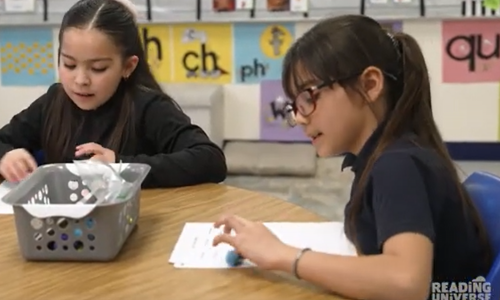
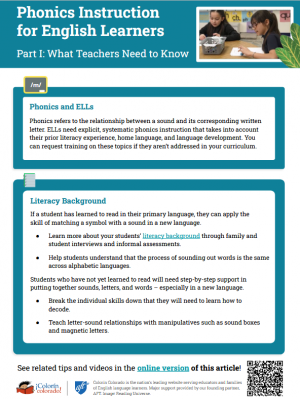









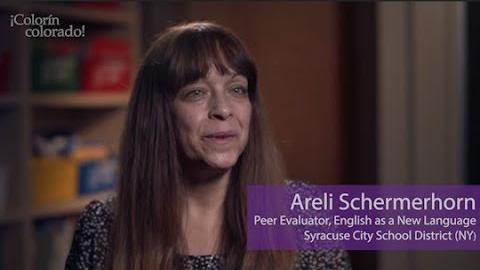
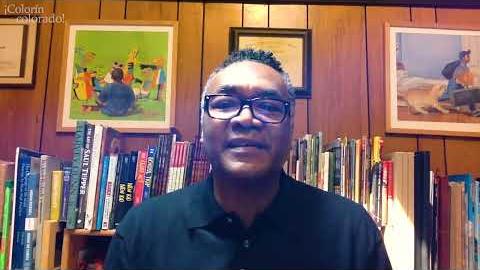

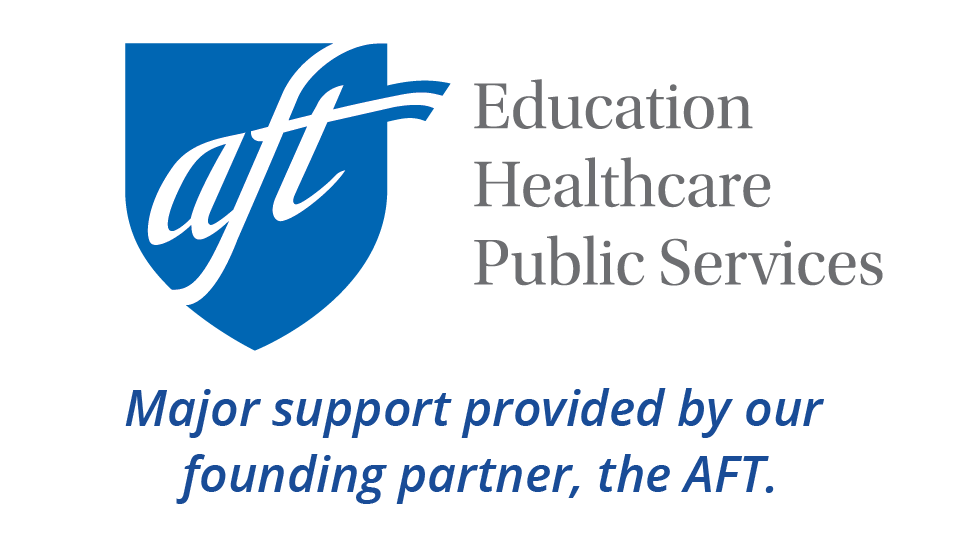
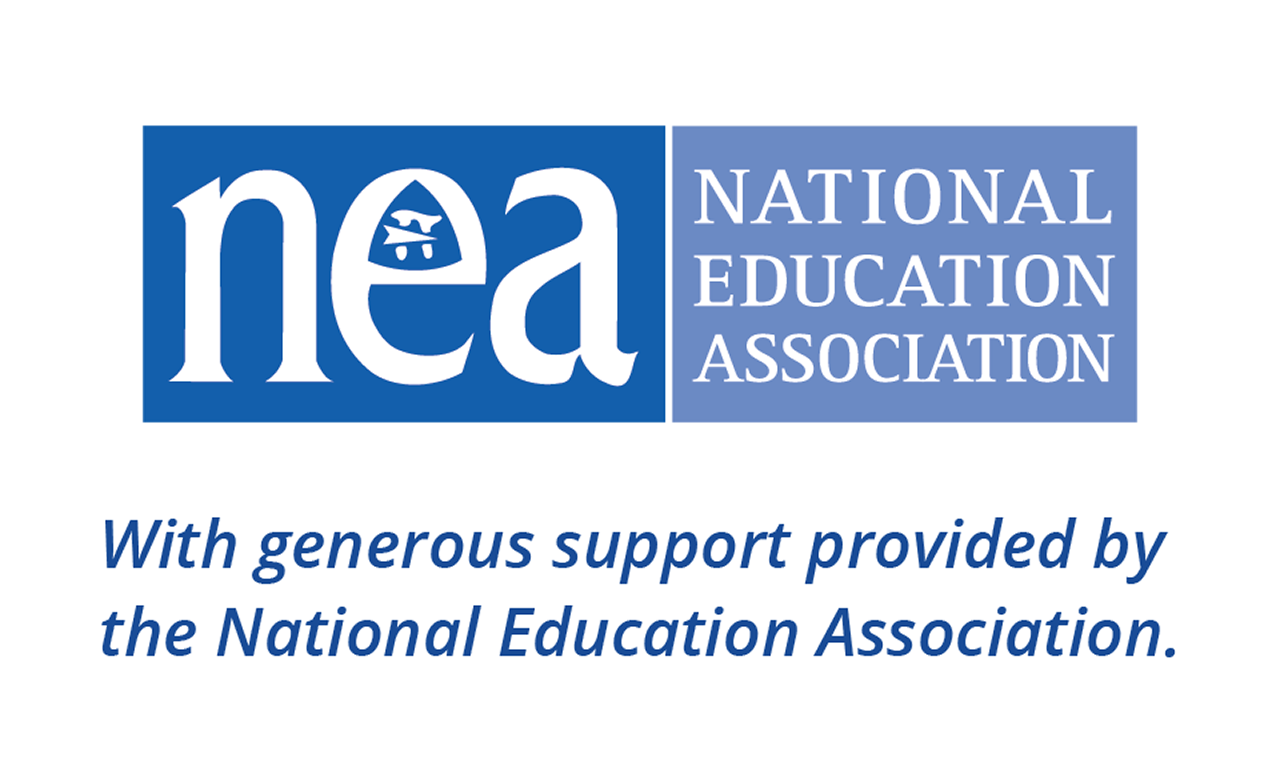
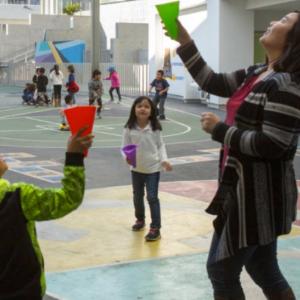



Add new comment